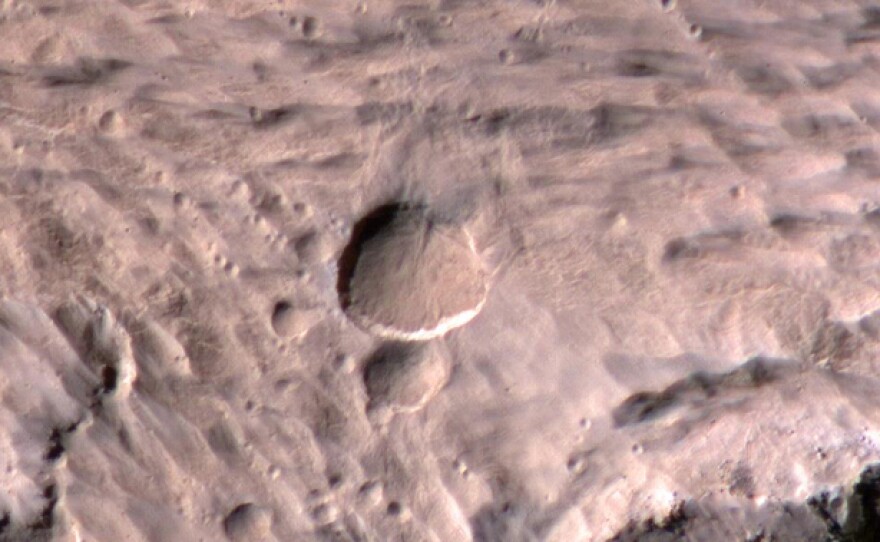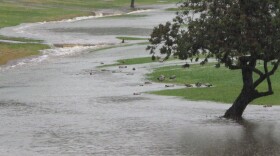Before and after shots taken by a Mars-orbiting satellite have detected a newly created impact crater half the size of a football field near the planet's equator.
NPR's Joe Palca says that while objects are striking Mars all the time (with big chunks surviving until impact, thanks to the Red Planet's thin atmosphere), this is the first time scientists have been able to determine the exact day a meteor struck – in this case, sometime on March 28, 2012.
But it wasn't noticed until two months ago.
That's when Bruce Cantor, who is in charge of monitoring Martian weather for the Opportunity rover team, saw an unfamiliar dark patch on an image taken by the Mars Reconnaissance Orbiter, or MRO.
"It wasn't what I was looking for," Cantor said, a principal investigator at San Diego-based Malin Space Science Systems. "I was doing my usual weather monitoring and something caught my eye. It looked usual, with rays emanating from a central spot."
"He began examining earlier images, skipping back a month or more at a time. The images revealed that the dark spot was present a year ago, but not five years ago. He homed in further, checking images from about 40 different dates, and pinned down the date the impact event occurred; the spot was not there up through March 27, 2012, and then appeared before the daily imaging on March 28, 2012."
That's when the MRO's higher-resolution camera swung into action and got the detailed image above.
NASA says the impact that created the crater — the largest ever spotted in before and after satellite images — was preceded by an explosion in the Martian atmosphere that could be likened to the meteor blast that shattered windows in Chelyabinsk, Russia, last year.
"That left the one big crater, but also several smaller ones in the immediate vicinity," NASA says.
Copyright 2014 NPR. To see more, visit http://www.npr.org/






